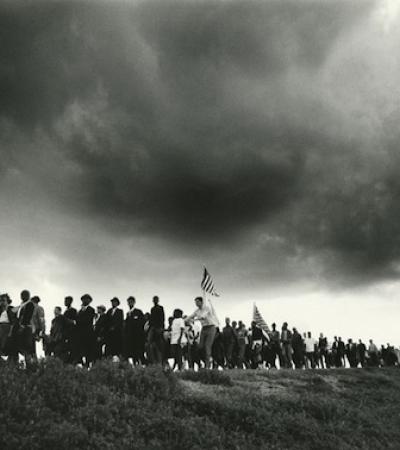
This month, EDSITEment provides a Common Core examplar with In the Time of Butterflies; explores Galileo’s universe; discusses the how the New and Old Worlds collided in America; traces the growing crisis in the Union in Antebellum America; and takes a look at a Halloween classic.
College and Career Readiness Lesson
Migrate to the Common Core with Courage In the Time of Butterflies. Set in the Dominican Republic during the rule of Rafael Trujillo, In the Time of the Butterflies fictionalizes historical figures (four Mirabal sisters, their parents, Trujillo himself, and his subordinates) in order to dramatize the Dominican people’s heroic efforts to overthrow this dictator’s brutal regime. The sisters are distinctive personalities, each engaged in the struggle for independence. With unique structure of time frames and alternating voices, Julia Alvarez has written a complex coming-of-age novel that provides a context for students to look at the struggles of women to secure their human, civil, and economic rights in countries around the world today.
In this lesson, students undertake a careful analysis of the main characters to see how each individually demonstrates courage in the course of her family’s turbulent life events. Students additionally analyze a speech delivered in 2006 by a daughter of one of the sisters to understand better the historical legacy of these extraordinary women.
Galileo: Revealing the Universe
In the second century CE, a Roman astronomer named Ptolemy refined this view, stating that all planets moved in perfect circles, attached to perfect spheres, all of which rotated around the Earth: a theory that predicted the paths of the planets fairly well. This view, accepted for 1,400 years, was challenged by new astronomers, aided by instruments that enabled them to see the skies as they had never been seen before. Chief among them was Galileo, bolstering his observations with a revolutionary telescope he invented. He carefully explored the night sky, turning his telescope to what looked like “dark” parts and discovering that they were filled with stars too dim to be seen without the telescope’s enhancement. In 1610, he published his observations of the solar system and distant stars in a volume calledSidereus Nuncius, or Starry Messenger.
In this lesson, students will practice close reading of passages from Galileo’s Starry Messenger concerning his observations of the stars and constellations through a telescope. They will develop an understanding of how he constructed his arguments to challenge the established views of his time using new technology and logical reasoning.
After Columbus: When Worlds Collide
There are few absolutes in history. Yet, we often try to boil down events and ideas to a few simple explanations. As a history teacher in a public school, I have found that it can be tough to find the time to explore the complexities of many topics. We simply don’t have the time in the light of high stakes testing and other shifting priorities. However, I would argue that when students are provided with simple explanations, we paint an uneven picture of history that ultimately will distort their perception. We must find opportunities to bring them into the intricacies of historical stories.
The recent PBS documentary When Worlds Collide does just that as it takes the audience through the first one hundred years of the Spanish Empire in the New World. Instead of casting the Spanish as murderers or heroes and the indigenous population as victims or savages, the program explores the set of entangled exchanges and negotiations that occurred between these peoples. Although there is truth on both sides concerning the initial contacts between inhabitants of the New and Old Worlds, the aggregate is far more complicated than what is often presented in popular culture. How Teachers Can Make the Most of When Worlds Collide.
The Growing Crisis of the Union in Antebellum America.
In this unit, students will trace the development of sectionalism in the United States as it was driven by the growing dependence upon, and defense of, black slavery in the southern states. Initially seen as contrary to freedom but tolerated in order to produce the U.S. Constitution, by the 1830s the “peculiar institution” found advocates who saw it as a “positive good.” Its expansion into Missouri, southern outrage over federal tariffs, and westward expansion into new territory produced a volatile and persistent debate over slavery that increasingly threatened to divide the American union. By 1860, the nation found an old Democratic Party split over the right to extend slavery into federal territory, and a new Republican Party nominating an anti-slavery, though not abolitionist, president. When Abraham Lincoln's election produced no national consensus to settle the matter of slavery’s future, a southern “secession” sealed the fate of the Union.
Haunt Your Students with this Halloween Classic
“What fearful shapes and shadows beset his path amidst the dim and ghastly glare of a snowy night!” These words mark the frontispiece of the 1899 edition of “The Legend of Sleepy Hollow,” a Halloween classic that has entertained people for over a hundred years.



